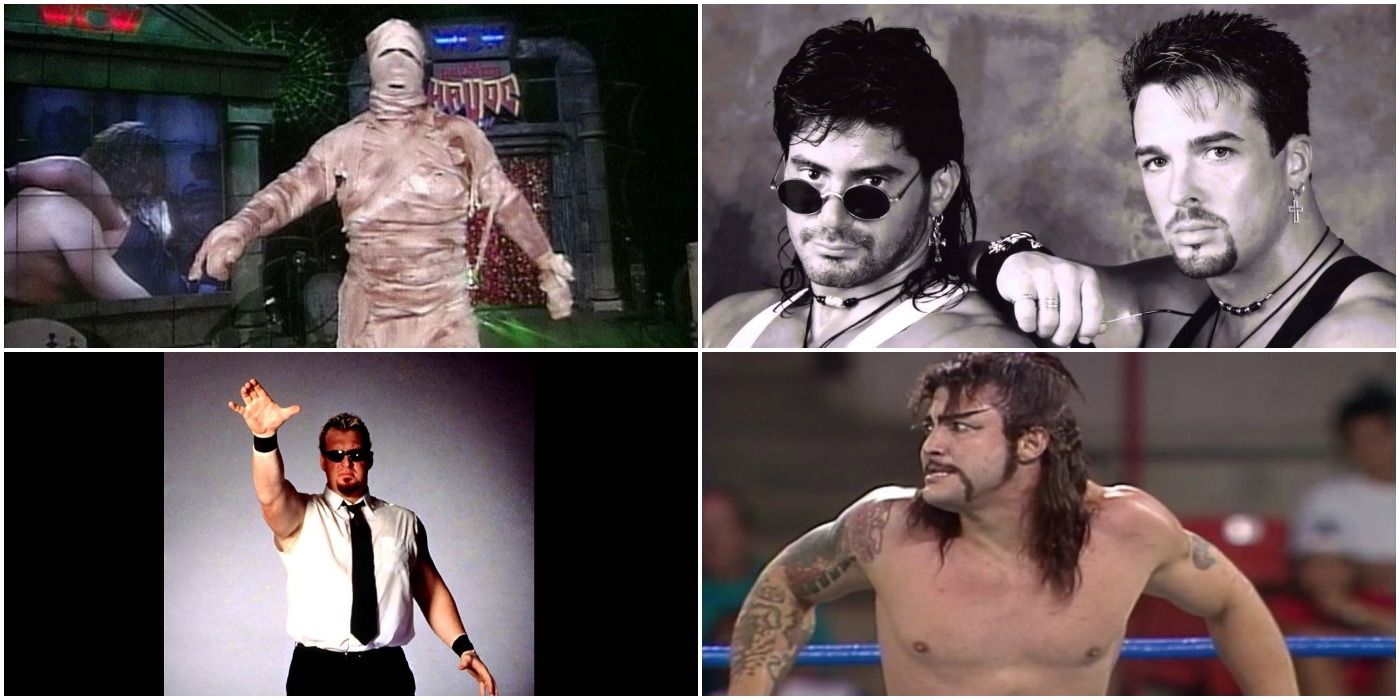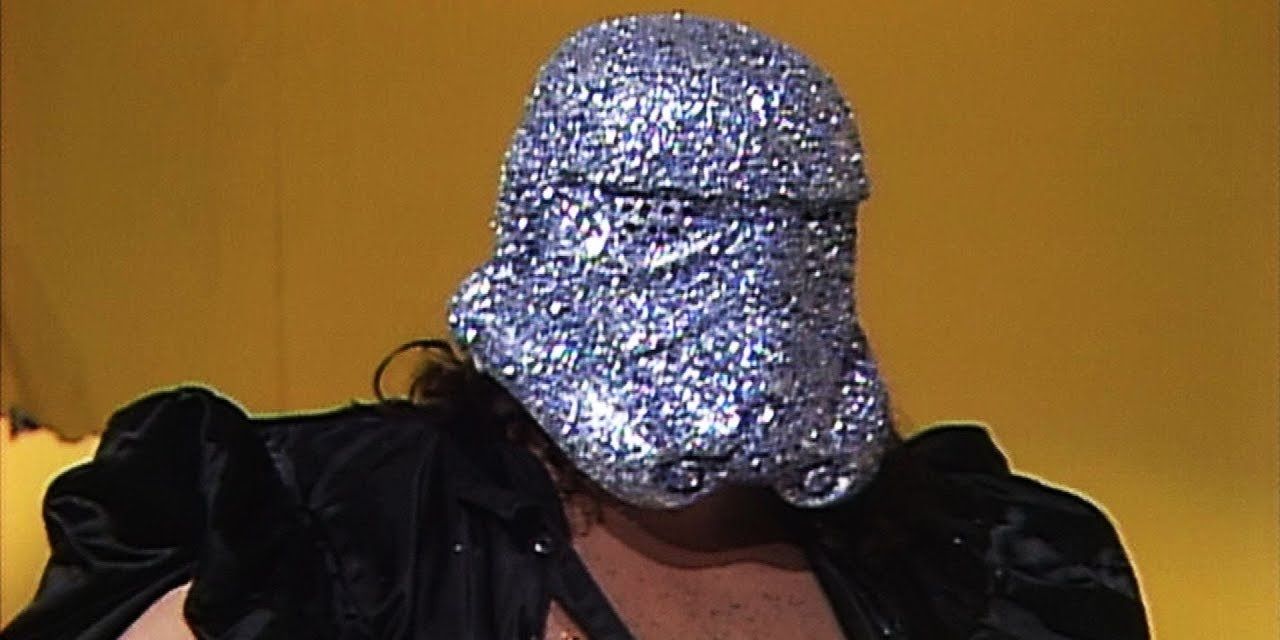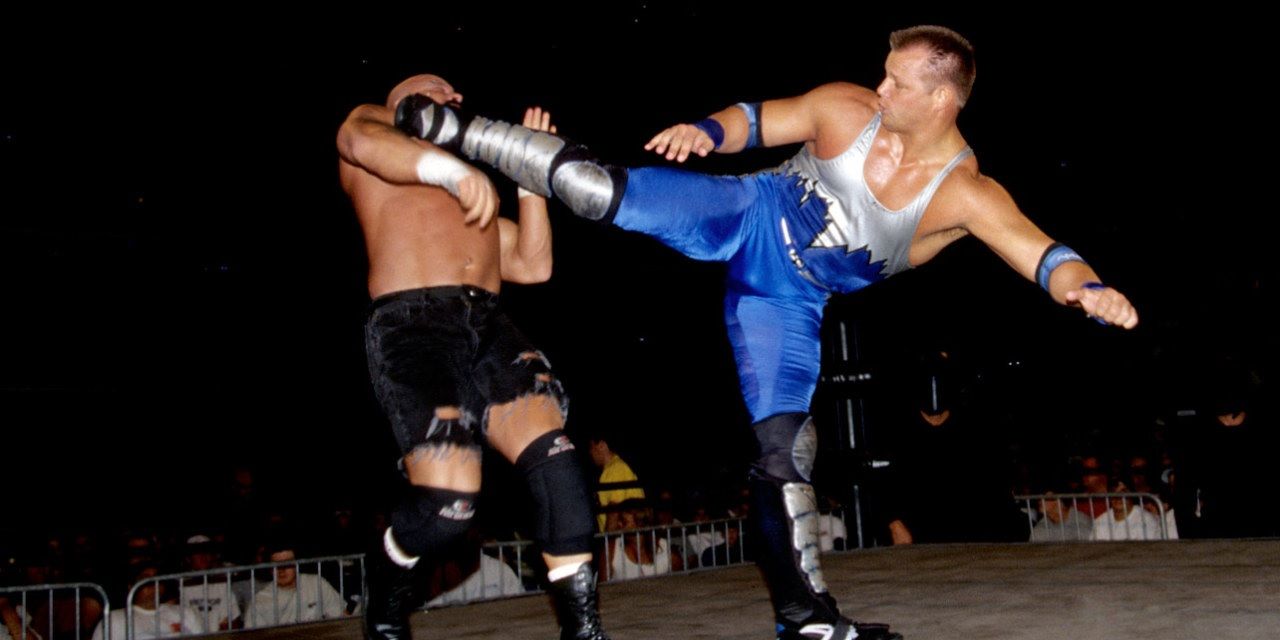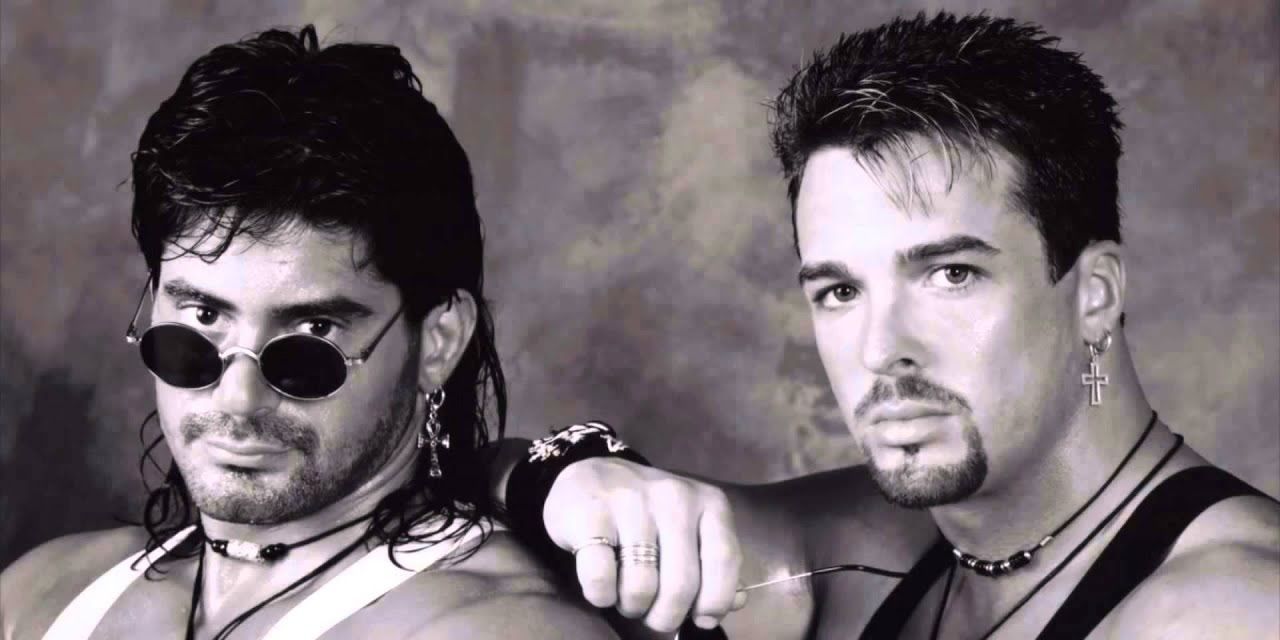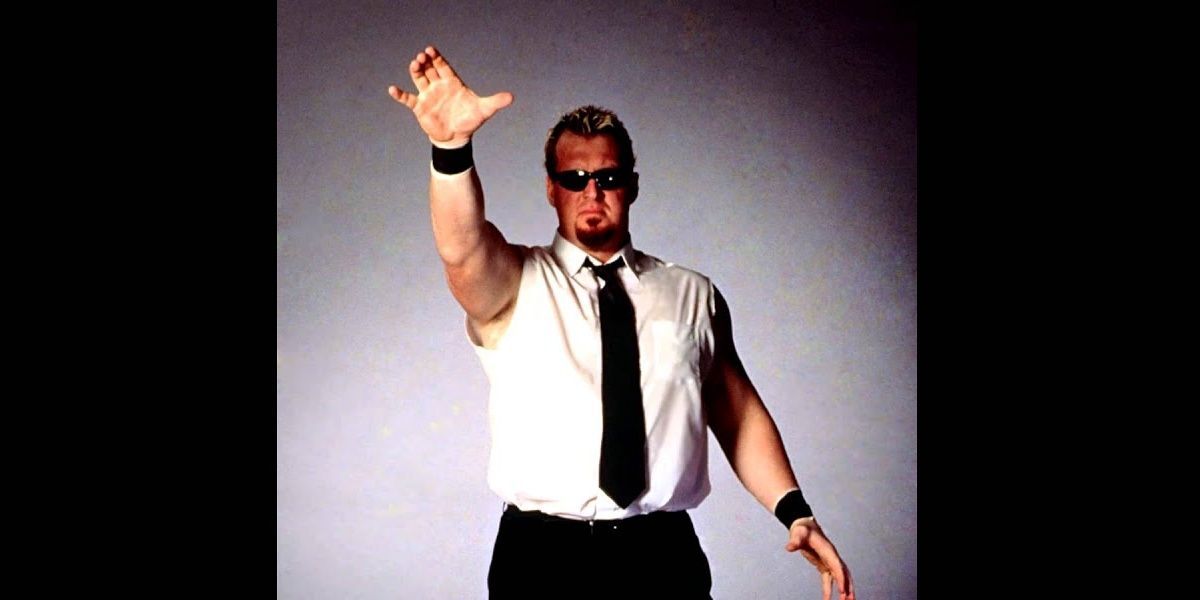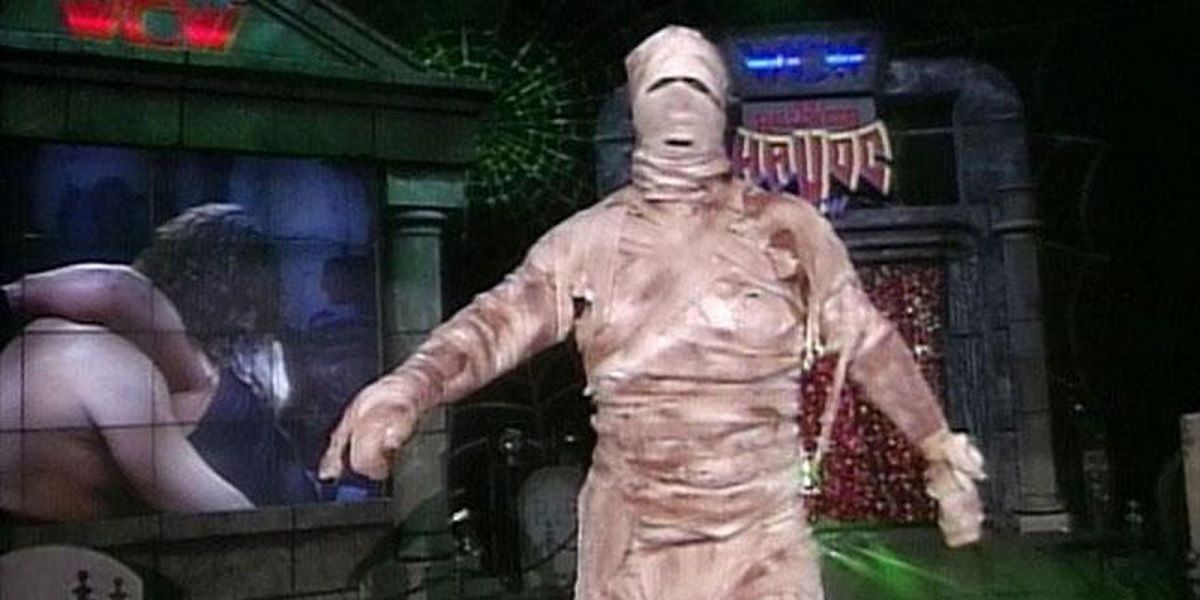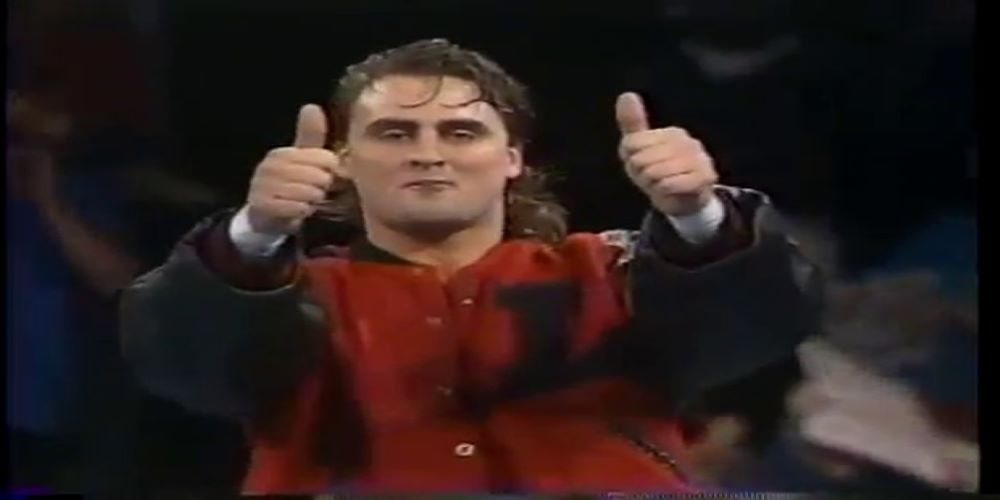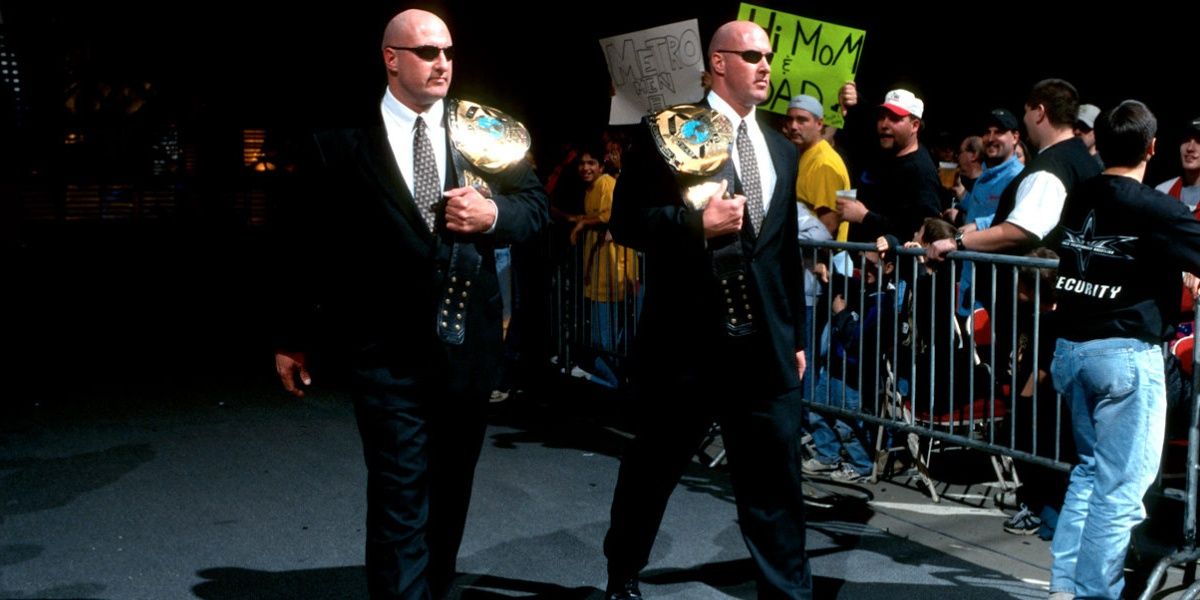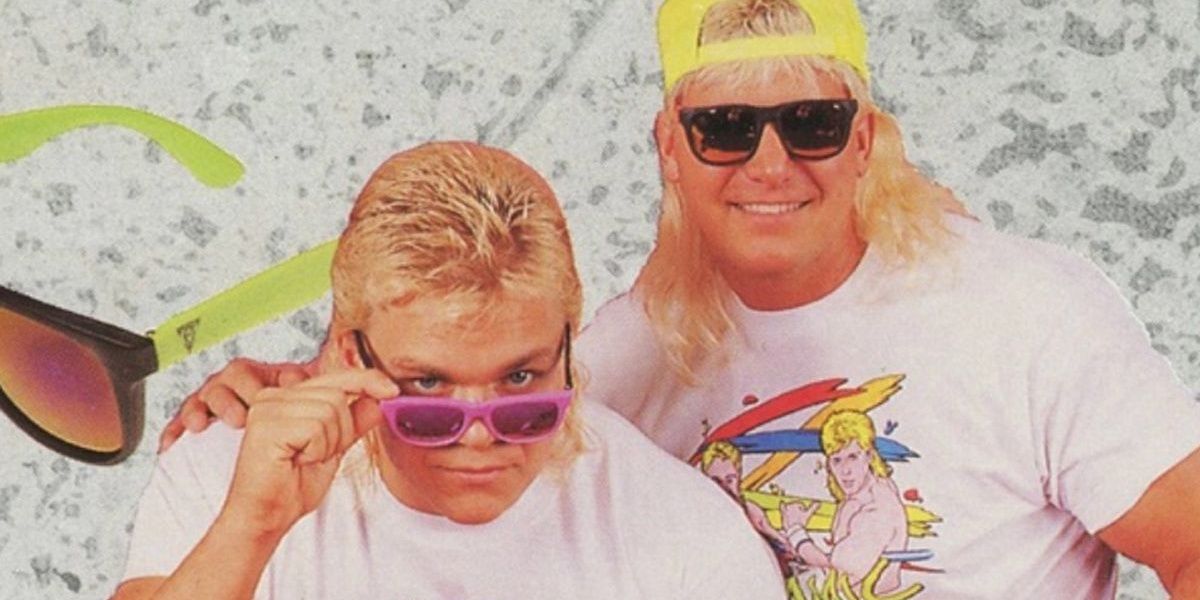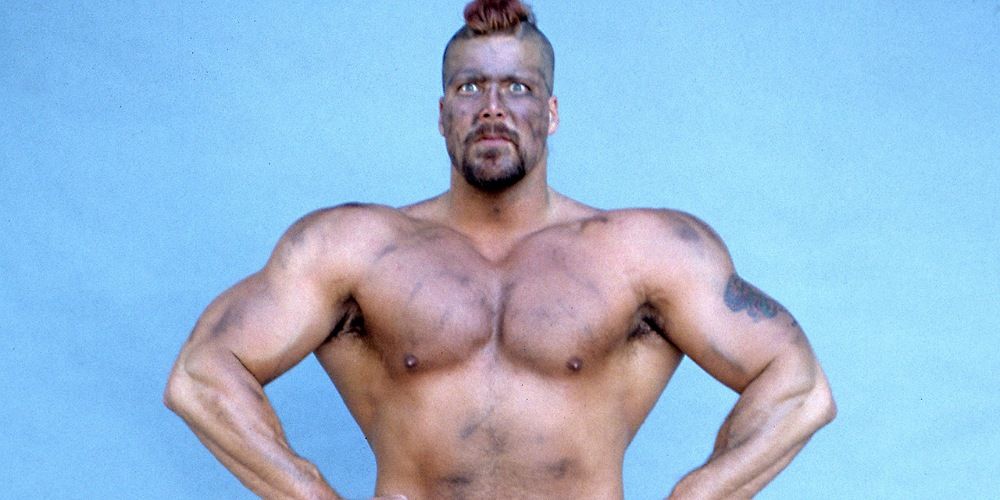First impressions are a huge deal in life, and wrestling is no different. If you make a good one, it can help spark interest and buzz. However, if your debut is a dud, it can garner you the wrong kind of attention.
There are a few reasons a debut can be bad - something goes awry, it's timed poorly, or in many cases, it can be due to the character itself being lousy. Some wrestlers have been able to recover from a poor first impression, usually because whatever left a bad taste for fans wasn't something fundamental to the wrestler or gimmick. Unfortunately for others, they either choose to hang on to whatever was keeping them from getting over in the first place for too long, or it was so bad that fans never forget. Often, a wholesale gimmick repackaging and/or simply leaving the promotion is necessary for a fresh start.
10 The Shockmaster
What is there to say about Fred Ottman's WCW debut that hasn't already been? The former Tugboat/Typhoon was set to make his first wrestling appearance for Turner in a big way, joining Sting, Davey Boy Smith and Dustin Rhodes for a War Games match at 1993's Fall Brawl.
However, when Sting and the 'Bulldog' introduced their mystery partner on a Flair for the Gold segment at Clash of the Champions 24, things could not have gone worse. Ottman, wearing a glittery Stormtrooper helmet and vest, stumbled through the set's wall and tripped over his own feet. His helmet fell off and as he attempted to regain his footing, TV commentators were audibly stifling their laughter. The segment - and the Shockmaster gimmick - were sunk before they could even get off the ground and 'Uncle Fred's career never recovered.
9 Glacier
When the 'Blood Runs Cold' vignettes began running on WCW television in April 1996, while a bit out of place, their Mortal Kombat-esque characteristics drew fan interest. However, as WCW programming underwent a shift with the debut of the nWo that June, Glacier's debut was pushed back to September when he finally made his debut, defeating The Gambler on an episode of WCW Pro.
By the end of the month and after a few underwhelming Nitro matches, the Sub Zero rip-off gimmick was shelved and wouldn't appear again until that December. It wasn't until March 1997 when WCW would finally bring in Chris Kanyon's Mortis gimmick to begin the aforementioned storyline. Eventually, Kanyon and Bryan Clarke, who played Mortis' partner Wrath, settled into steady roles. Meanwhile, Glacier floundered in a few random feuds before selling the gimmick to Kaz Hayashi on television.
8 Scotty Riggs (American Males)
Scott Antol got his start in 1992, mostly using the name 'Scott Studd' in independent promotions like the USWA, Smoky Mountain and PNW. He even had a few dark matches and jobber squashes in WCW along the way, eventually scoring a contract in 1995.
Upon the newly-renamed Riggs' debut, it made sense that he'd sport a gimmick that made use of his youthful good looks. He'd team with another young wrestler who'd already had some success in a couple of babyface teams, Marcus Alexander (later Buff) Bagwell. However, when the duo adopted the American Males gimmick - along with its hilarious entrance music - the gregarious Chippendale dancer gimmick fell flat with most fans. The Males managed to hold the WCW tag titles for eight days before the two separated, with Bagwell joining the nWo and Riggs having a less successful run as a member of Raven's Flock before departing in 1999.
7 The Wall
Jerry Tuite was a 6'8", 320 lb. monster of a man who seemed destined to make an impact in wrestling. He trained in New Jersey by veteran Larry Sharpe and, after a few appearances in ECW in 1998 as Hellraiser, signed with WCW to work in the Power Plant with fellow Garden State native Bam Bam Bigelow.
When he'd get his opportunity on WCW television the following year, the promotion was in turmoil and debuting tons of new gimmicks on both new and established stars. Alex Wright, the former dancing German cruiserweight, had recently undergone a radical repackaging as the evil Berlyn when Tuite was brought in as The Wall, his bodyguard. However, the two would soon split as Wright's weird new gimmick wasn't working. Minus the 'Berlin Wall' pun, Tuite was now just a large blond-haired wrestler with a silly name. Too bad there was nobody named 'the Roof' to be his new partner!
6 Ron Reis (The Yeti)
Ron Reis, who was a legit 7'1" when he played basketball at Santa Clara University in 1990, wasn't the most talented or coordinated big man to ever inhabit a wrestling ring. He was trained by 1980s superstar Big John Studd and it seemed that at the very least, his height and legit athletic background meant that he'd get a 'giant' opportunity somewhere.
It made sense, then, that WCW would book his debut on an episode of Monday Nitro in 1995 as emerging from a block of ice, dubbed The Yeti but nonsensically dressed as a mummy. When he, as Tony Schiavone called him that night - the 'Yetay,' joined the Giant shortly after at Halloween Havoc to dry-hump Hulk Hogan in one of wrestling's weirdest attacks ever, it signaled an impending gimmick change into a just-as-stupid ninja outfit. Thankfully, because his face was hidden for this entire run, it wouldn't hold Reis back from future mediocrity as both Big Ron Studd and, more familiarly, Reese in Raven's Flock.
5 Yoshi Kwan
In the late 1980s, Chris Champion was a solid young British wrestler having modest success in the southern territories, including Florida Championship Wrestling, Jim Crockett Promotions and the CWA. He even took the USWA's borderline-illegal Kowabunga (I Swear I'm Not A) Teenage Mutant Ninja Turtle gimmick to the violent Japanese promotion FMW, of all places.
However, Champion was quite lucky that it was 1993 and not 2021 when he adopted his next gimmick, WCW's Yoshi Kwan, as Champion was not Japanese (or Chinese, or whatever exactly the gimmick was supposed to be). Despite being managed by the legendary Harley Race, it didn't even last six months before Champion suffered an injury. Considering how offensive the idea is that a British man was wearing makeup to imitate a vaguely-Asian character is, Champion and the creative team backing the gimmick would have been highly criticized - and rightfully so - if they attempted this today.
4 Erik Watts
Nepotism is as much a feature of wrestling as a hammerlock or a clothesline. Throughout history, promoters have used their positions of power to put their children on the fast track to success - to varying results. For every Kerry Von Erich, Shane McMahon and Dustin Rhodes, there's Chris Von Erich, Garett Bischoff and Erik Watts.
At first, Watts had two major things going against him: he was being pushed so heavily upon his debut in 1992 because of who his father, WCW booker 'Cowboy' Bill Watts, was and he wasn't very good. He was swiftly booked to hold his own in a feud with no less than the Dangerous Alliance, taking United States Champion Rick Rude to several time limit draws and winning clean victories over both Bobby Eaton and Steve Austin, but fans turned further against him by the week. When his father left WCW in 1993, despite not immediately free-falling down the card, it was a matter of time before the younger Watts had to look for a fresh start elsewhere.
3 The Harris Twins
When WCW began consistently losing the Monday night ratings wars in 1998 and 1999, their booking grew more desperate with time. As the WWE's momentum continued to grow, Turner officials began looking wherever they could for answers to not just stop the bleeding, but hopefully turn the ship around.
Unfortunately, they often looked to former WWE creative staff like Vince Russo and Ed Ferrara. They branded the Harris Twins as 'Gerald' and 'Patrick, respectively, upon their debut as 'Creative Control' dooming their new gimmick as an inside joke from the start. Dropping the silly monikers eventually helped, though, as Ron and Don would join the nWo 2000 under their real names and held the tag titles three times before WCW's closure in 2001.
2 Shane Douglas (Dynamic Dudes)
For a young Shane Douglas in 1989, the chance to land a spot in WCW's tag team division was an incredible opportunity. With only a handful of WWE dark matches and a month-long reign as UWF Television Champion under his belt, Douglas and new partner Johnny Ace (a.k.a. John Laurinaitis) decided to team up as the Dynamic Dudes, a pair of skateboard-wielding, smiley babyfaces.
Despite the rise in popularity of skateboarding and its culture in the 1980s, the duo's gimmick fell flat with WCW audiences. It could be that since neither of the two knew how to ride a skateboard, fans saw through the gimmick as being too contrived - and cheesy - to cheer. When Jim Cornette tried to help get the Dudes over in a feud with his heel Midnight Express, it almost inadvertently turned his charges babyface instead.
1 Kevin Nash (Master Blaster Steel)
At 6'10", the former University of Tennessee basketball player was going to stand out wherever his professional life took him. As 'Big Sexy' worked after college as a bouncer at an Atlanta strip club, he'd meet several WCW wrestlers who encouraged him to give professional wrestling a chance. With Nash's size, personable demeanor and good looks, he knew that wrestling could prove lucrative if given an opportunity.
The problem, however, was that he'd debut in 1990, which was among the worst (or best, depending on your perspective) years for goofy gimmicks in WCW history. Nash's first appearance would be as one-half of yet another dud of a Road Warriors rip-off tag team, this time with Al Green as the Master Blasters. Fans weren't impressed, and things would get even worse for Nash upon repackaging as Oz, based on - you guessed it - the classic movie from the 1950s.

